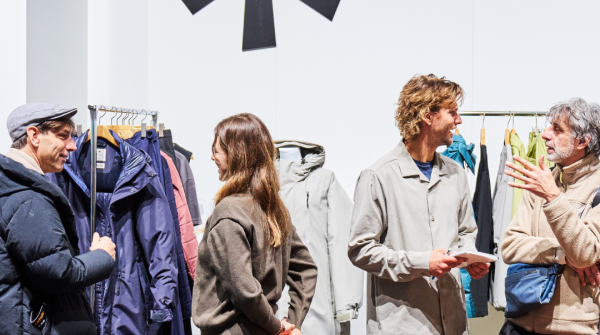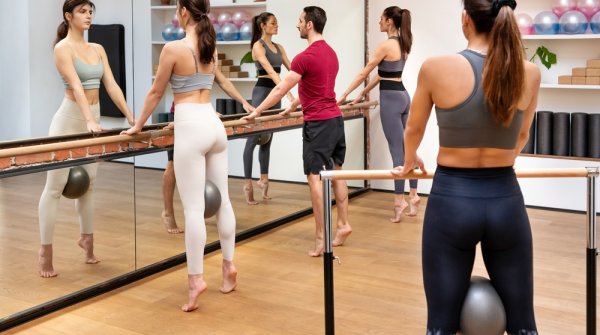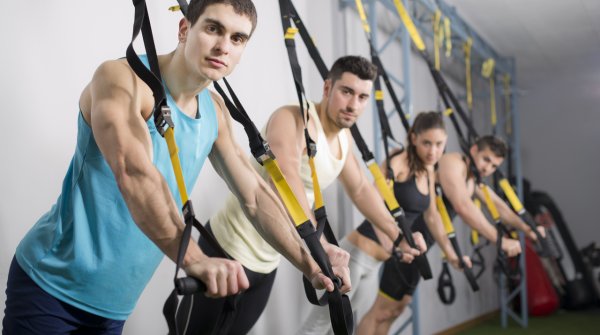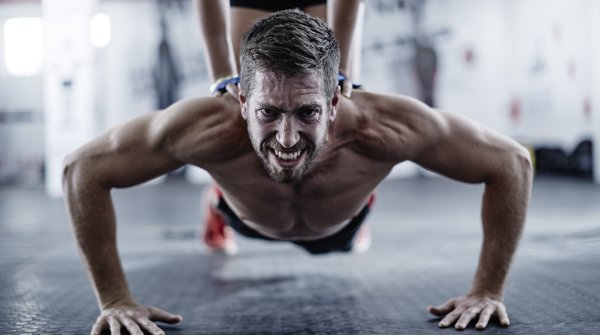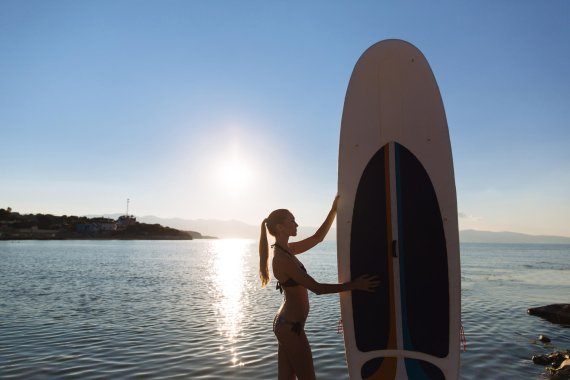
The trend is clear: the inflatable board, also known as the iSUP board, is the clear favorite, not just in Germany. iSUPs are used for stand-up paddling even as far as in China.
This development is above all due to the fact that the inflatable SUP board is hardly inferior to the classic hardboard anymore when it comes to handling capabilities. Nowadays you can even win races with a good inflatable. At the same time it offers the following advantages:
- less storage space needed and considerably easier transport (backpacks are often included in the delivery contents),
- less susceptibility to nicks and scratches
Take it too far – particularly where stones are concerned – and things look very different: even with the extremely durable PVC exterior of the iSUP, the inflatable can still be damaged and sink.
This danger doesn’t exist with hardboards. And of course you don’t have the hassle of always having to inflate the board. But that makes transportation much more difficult.
Even though English measurements in feet (1 ft = 30.48 cm) and inches (1 in = 2.54 cm) demand a certain talent for math, don’t write off the most fundamental basics. Even as a beginner you can get an overview of the choice of SUP board lengths with the following: The longer, wider and thicker the board, the easier the handling when it comes to casual stand-up paddling.
For those who are more well-built, choose an SUP board with a length of 12.5 feet or more (about 4 meters) and a volume of 230 liters.
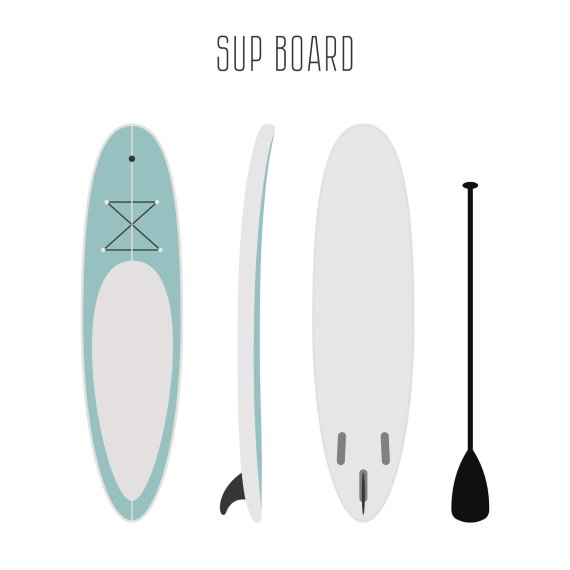
Length: The longer the board, the more weight it can take. That doesn’t just concern your own bodyweight, but also baggage transportation for trips. Directional stability is also better with longer boards (over 10 feet), but that takes its toll on maneuverability.
Width: Wider boards – between 32 and 36 inches – are more stable on water than their thinner counterparts between 25 and 29 inches. Wider boards are recommended for beginners given their balance, at least as long as you don’t want to do any racing.
Thickness: Four to six inches is standard. Thicker variations are more suitable for those who weigh less – and also children. Those who are a bit heavier will easily get their feet wet with thicker boards.
Other than length, width and thickness, SUP boards are also defined by their classification:
- Fitness boards are relatively long and wide to guarantee secure footing during exercises.
- Allround SUP boards are well-balanced: with a length of 9 to 10 feet, they should be agile but also stable in the water.
- SUP boards for racing (12.6 to 14 feet) are reserved for professional due to their long, thin shape, which ensures speed. The boards are however very wobbly.
Regardless of the brand or planned use: a good SUP board will set you back about a few hundred euros. Often the cost of a paddle must also be added to this, but at 15 to 50 euros, that’s only a small amount in comparison.
You should also take into account the cost of suitable functional clothing. A wetsuit is only rarely on the wish list for stand-up paddling, because you quickly start to sweat in it. Compared to other water sports such as surfing or windsurfing, it is very rare to find yourself in the (cold) water with SUP.
Most allround and touring iSUP boards have a price range of between 700 and 1,300 euros. The most well-known brands are Fanatic, Mistral, Starboard, Naish, Jobe, JP Australia, RRD Roberto Ricci, BIC SUP, NSP, NoveNove, Simmer and Red Paddle. Munich start-up Tripstix won at ISPO BRANDNEW 2016: their innovative double chamber SUP boards wowed the jury.
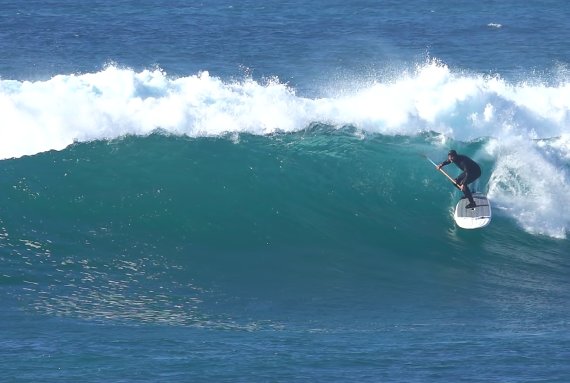
The Shanghai established company ORPC offers significantly cheaper boards with their Aqua Marina brand, that prove themselves well when tested. The Aqua Marina SUP Fusion (allround and for shallow water) for a good 500 euros or the Breeze SUP including paddle for around 300 euros are both already available.
You won’t find a much cheaper SUP board, even a used one. eBay does however offer a large range and the shipment of inflatables is unproblematic. Anyone who buys in autumn or winter can find a real bargain here.
Whether online retail or shops at holiday resorts, both alternatives have positives and negatives. In shops or at rental stations, you can often test the SUP board and receive some individual advice. But the smaller range and the times of your shopping tour limit your freedom to choose. Nowadays lots of shops are active both online and offline, and are happy to deliver your SUP board should that be required.
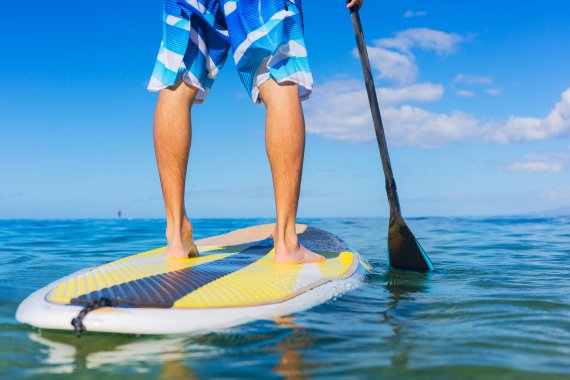
Online retail
There are often considerable discounts to be found just after the summer season. It’s worth comparing the following sites for example:
- Nootica
- Funsport.de (SUP Shop Berlin)
- SUP Wave
- Surfinsel.at
Stationary retail + online
Local businesses with an online presence can be found throughout the whole of Germany, no just in the SUP-mad south. Here are a few examples:
- Munich Stand Up Paddling (Munich)
- Freerider Online Shop (Hamburg)
- SUP Shop Kiel
- SUP Store Cologne
- SUP Chiemsee
- SUP Center Allgäu
Want to see some more action on the water? Discover the ISPO pool:
- ISPO awards
- Mountain sports
- Bike
- Design
- Retail
- Fitness
- Health
- ISPO Job Market
- ISPO Munich
- ISPO Shanghai
- Running
- Brands
- Sustainability
- Olympia
- OutDoor
- Promotion
- Sports Business
- ISPO Textrends
- Triathlon
- Water sports
- Winter sports
- eSports
- SportsTech
- OutDoor by ISPO
- Heroes
- Transformation
- Sport Fashion
- Urban Culture
- Challenges of a CEO
- Trade fairs
- Sports
- Find the Balance
- Product reviews
- Newsletter Exclusive Area
- Magazine

